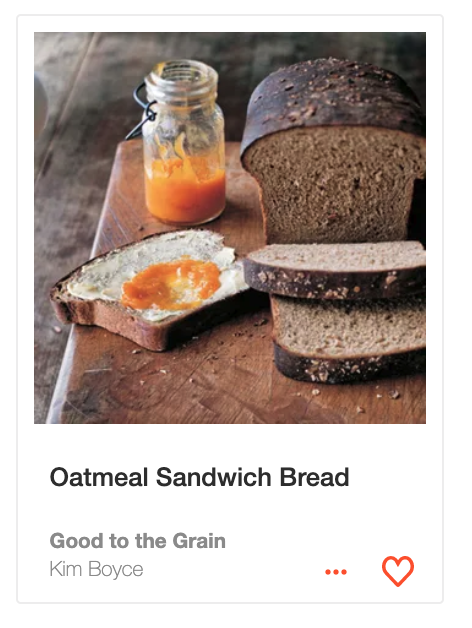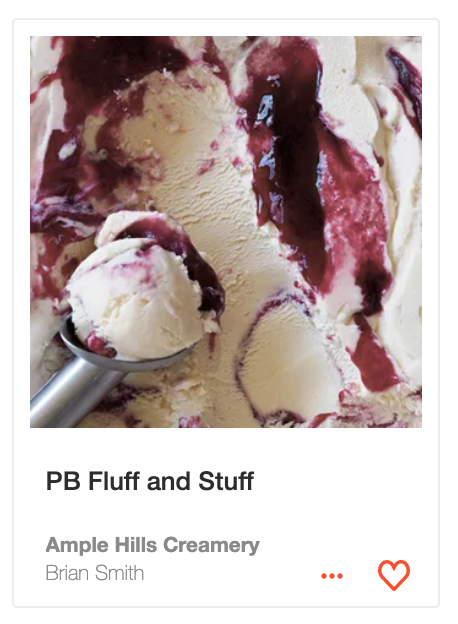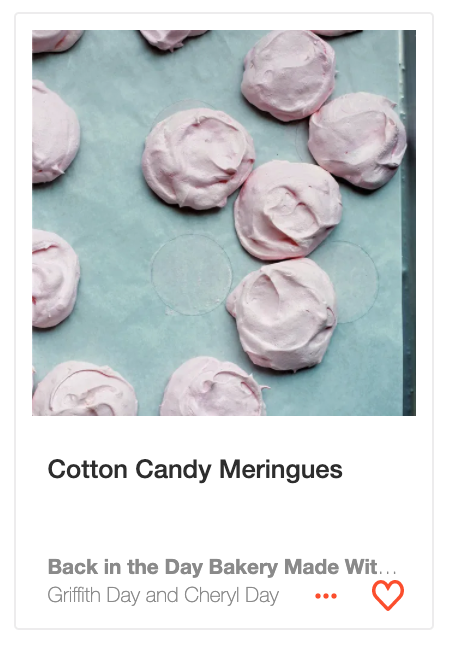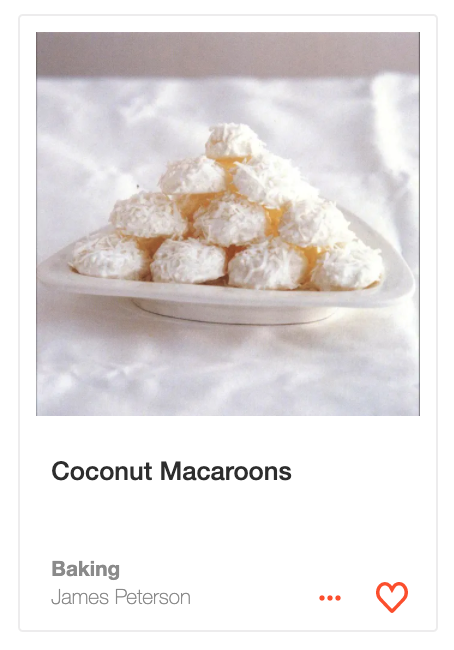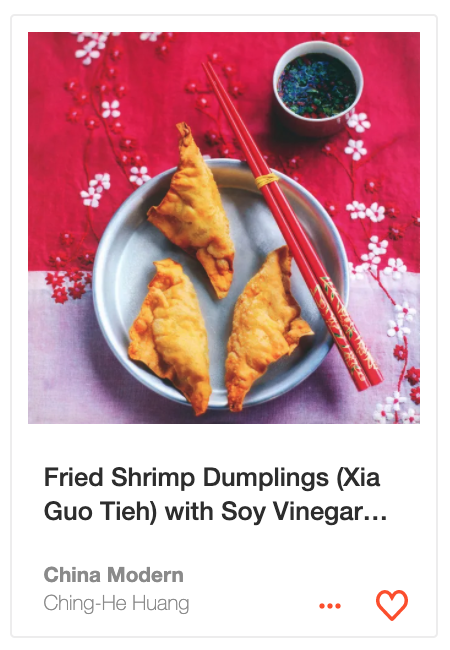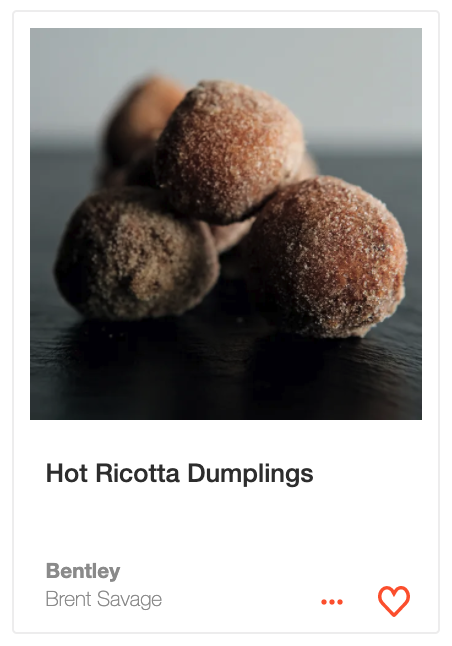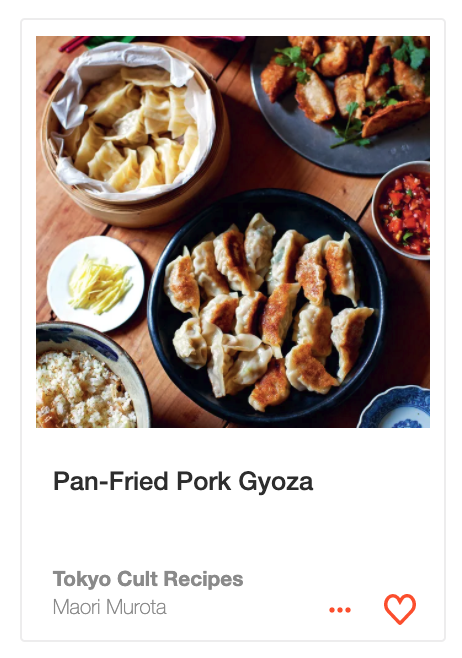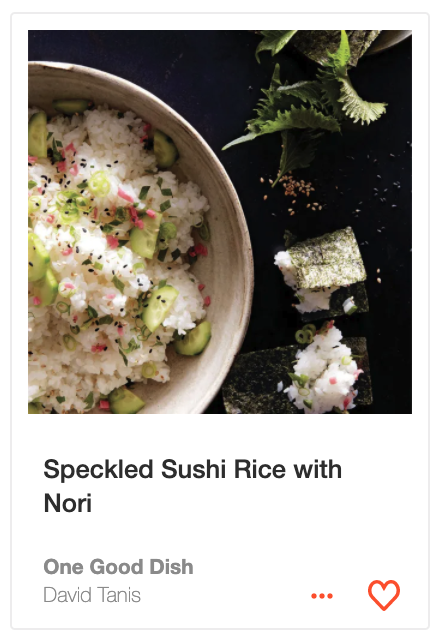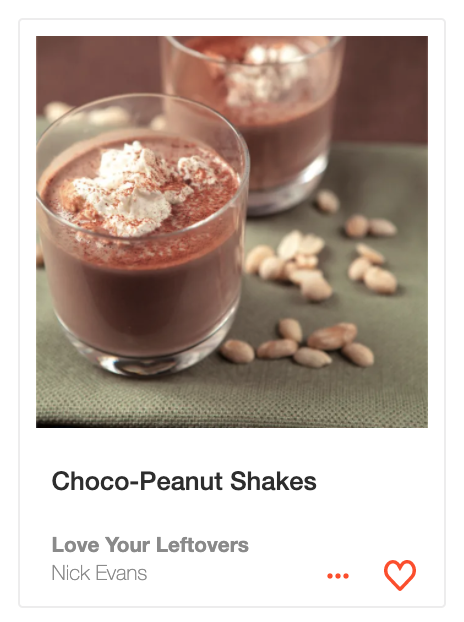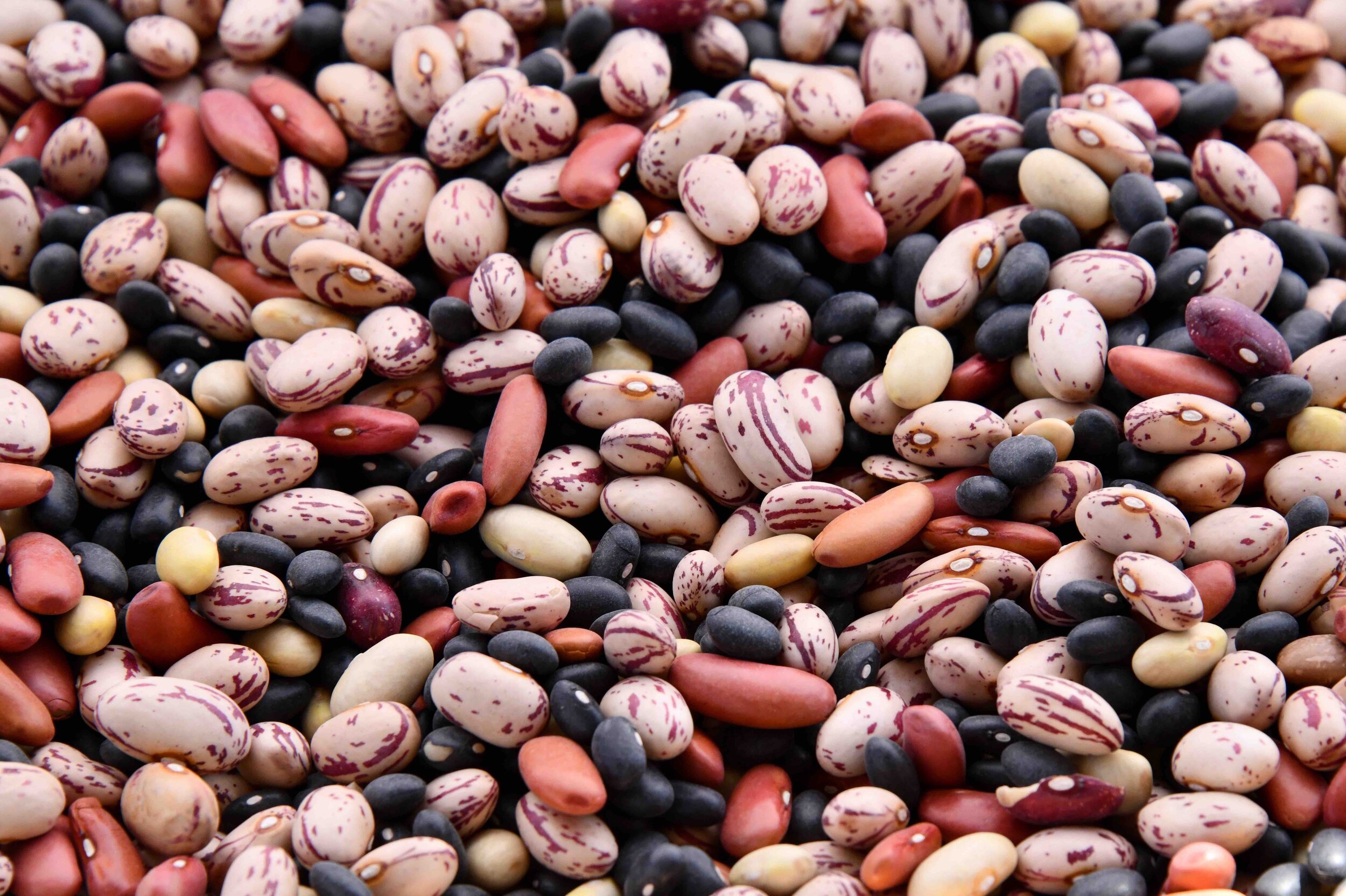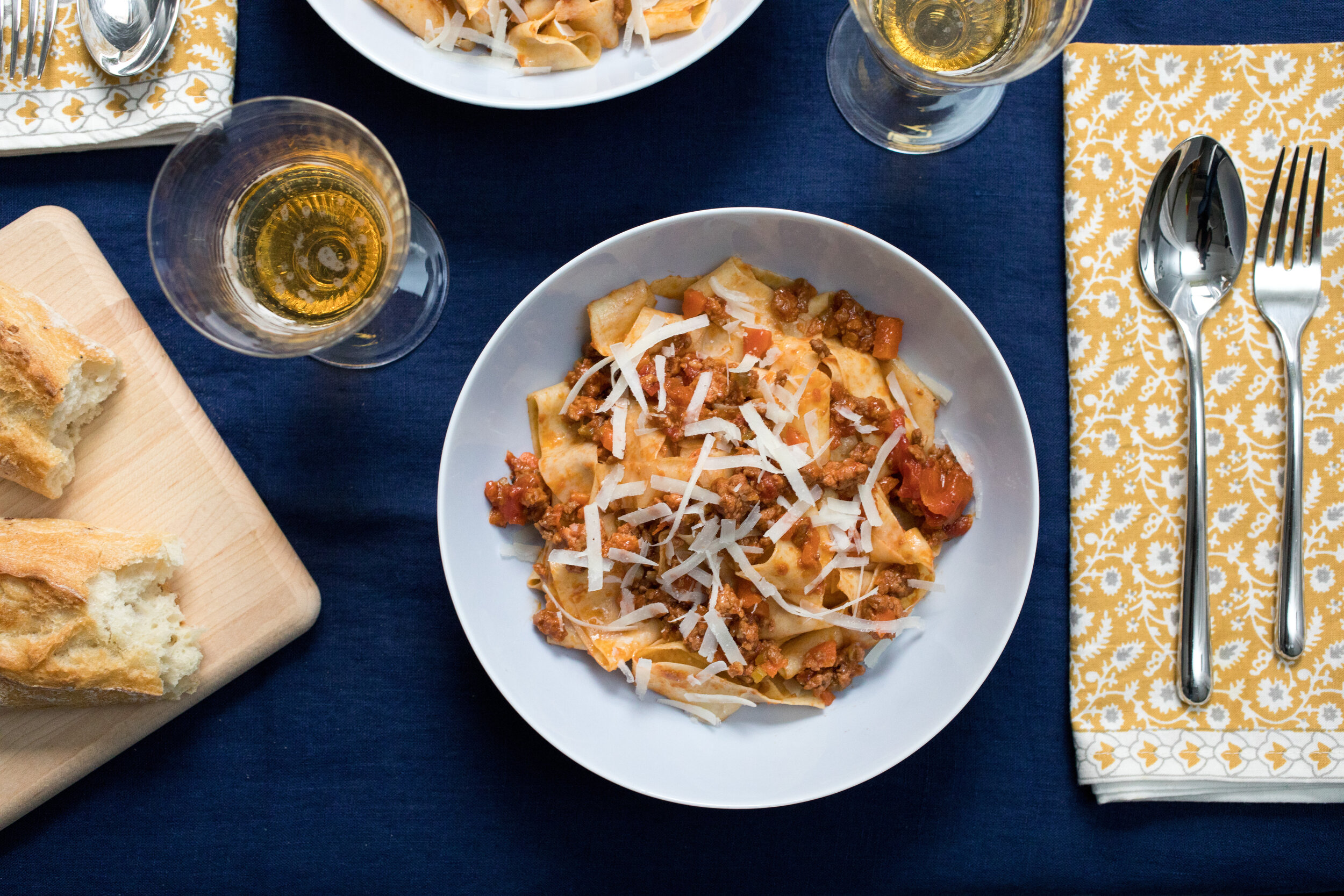Advertisement
Turn Your Kitchen Into a Culinary Lab
1 April 2020 · Young cooks
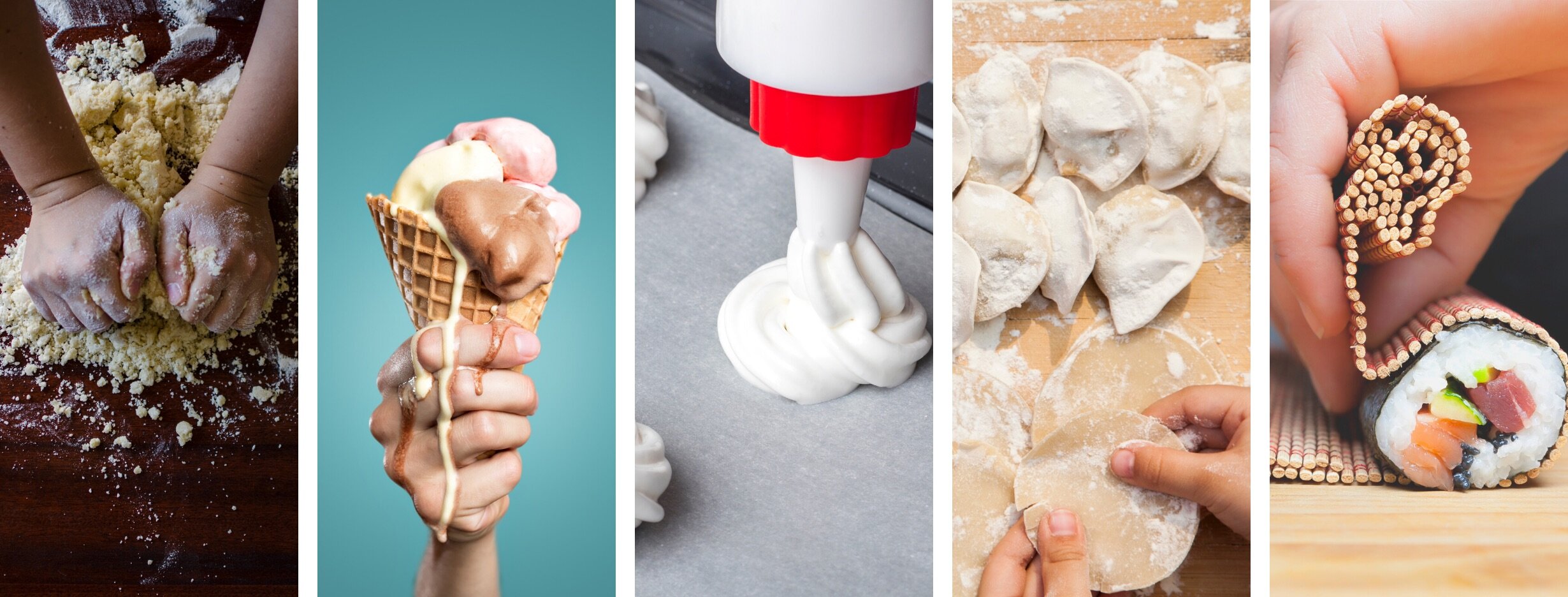
Projects for learning in the kitchen: make bread, ice cream, meringue, dumplings, and sushi!
30 days unlimited access to ckbk, no strings attached: We Can Cook Through This
Bring the classroom to your kitchen
As a mother of two young boys, the last few weeks of social distancing and staying indoors have been, well, how can I best describe it? “ A challenge” springs to mind but it’s been so much more multifaceted than that—so much worse and also so much better. Certainly, there have been plenty of challenging moments (and longer-than-moments), that have left me on the brink of tearing my hair out. I know all you parents out there can relate. All of a sudden we are stuck indoors having to feed seemingly endlessly hungry troops. I’m now a short order cook, laundromat, housekeeper, handyman, chief entertainer and umpire with no respite or ability to escape. Oh, and did I mention I have to get work done too? But, conversely there have also been a plethora of belly laughs, fun, intimate family moments to store away in one’s mind’s eye forever and lots and lots of great cooking experiences with my boys. Whenever they start to get angsty from cabin fever or a fight brews between us over turning off the screens, those times of tension are always better diffused when I offer up an opportunity to make something yummy together instead. In the last weeks, we have produced dutch oven bread, minestrone soup, coconut macaroons, banana chocolate chip cookies, sushi rolls, completely made-from-scratch ice cream sandwiches and gyoza. Tomorrow, we tackle meringues. Not today because I have to venture out for the weekly shop.
If there is one thing that you should do more of during this unprecedented time cooped up with the kids, let it be spending time together in the kitchen, cooking up family meals, snacks, treats. Whatever. They learn so much, even inadvertently so. We were chopping vegetables for a ratatouille. My 5.5 year old son suddenly exclaimed, “I had no idea eggplant was white inside”. We were measuring out milk for an ice cream recipe. Milk ... now there’s a funny one. “I know it comes from cows,” he pondered out loud. “But from where and how does it get there?” And that’s how that conversation got started ...
As we potentially face months ahead of us with schools closed, the prospect of an extended period of homeschooling is definitely daunting (terrifying?). Can we actually teach our kids anything that will stick? What if they discover that we are phonies and that we actually don’t know as much as we make out? At least we are all in it together, I suppose. Get them in the kitchen, I implore you. There are teachable moments aplenty. Just don’t forget to have ckbk at your fingertips for when those food sciencey questions pop up. Above all, I promise you, it will be SO MUCH FUN. Unlike that math class you tried to get the kids into. There will be no tears, just as long as the tray of baked cookies doesn’t end up on the floor. (Been there!)
5 Cooking Projects to Tackle With Kids
Working on your home-schooling curriculum? These super fun ideas provide plenty of opportunities for learning from history and math to science and geography, as well as the kind of hands-on participation children relish. It’s the ultimate goal-oriented task; they follow a set process, the recipe, to a delicious result! Of course cooking can be a fantastic outlet for a young imagination, it’s not just about sticking to a formula. Have your kids adapt a recipe to their tastes or come up with new combinations of flavorings, fillings, add-ins and toppings. The ideas and recipes in the five topics suggested below are most suitable for children from kindergarten age upwards. For toddler and preschoolers, see the section at the bottom of this blog post. As far as I’m concerned, it’s never too early to get your budding chef started in the kitchen. If you’ve witnessed the vigor with which an eight-month-old can squish a ripe banana to a puree, you’d definitely agree!
As you plan your “lessons,” be sure to consult all the great reference books we have on ckbk. They are filled with fascinating facts about ingredients and easy-to-digest information around the science of cooking as well as insightful historical and cultural context that you can incorporate by simplifying or adapting the language to your child’s level of understanding, age and appetite for detail. There are lots of opportunities to bring math into play. Have kids measure out the ingredients. If you are halving a recipe, have them halve the quantities.
If you can’t travel for the foreseeable future, why not explore the world through food and its culinary traditions? Bring out your atlas or globe so your kids can point to or be shown the country or region that a dish originates from. This is sure to bring about all kinds of interesting discussion around how different cultures enjoy different foods. Don’t forget to talk about the similarities too—food can be a wonderful unifying force in a world of many distinctions.
Cooking is a wonderful way to teach children about being organized. Have them sort, prep and lay out all the ingredients before they start any actual cooking. It’s also a means to instill in them the importance of good hygiene (washing hands and always wearing an apron!), and being safe and sensible in an environment with many potential dangers. If they are using real “knives,” make sure they understand how to properly grip their tools and curl their fingers under on the hand holding the food so that they are out of the way of the blade.
Now, gather the crew and get cooking!

1. Make Bread
You could deliver a full week worth of lessons about bread and the science of bread-making alone, especially if your kids are a little bit older. There is so much to share about the history of bread, yeast, the ins and outs of gluten—what it is, what’s the difference between regular AP flour and high gluten bread flour, why is bread kneaded when pastry is handled as little as possible, what is the chemical reaction that causes bread to brown when baked etc. When making “enriched” breads talk about how the addition of egg, milk, fats and sugar impact the structure and finish of the dough. Then there are lots of visual “wow” moments too from the initial rise to the tada reveal of the final loaf as it’s pulled out of the oven. Nothing though beats the sheer pleasure of that first slice of a homemade loaf slathered with butter.
Kid-Friendly Bread Recipes:
Bread sticks from Baking by James Peterson
Grape Focaccia from Cheese Obsession by Georgeanne Brennan
Honey White Bread from Back in the Day Bakery by Cheryl and Griffith Day
Steamed Bread from Mastering the Art of Chinese Cooking by Eileen Yin-Fei Lo
Monkey Bubble Bread from Baked Explorations by Matt Lewis and Renato Poliafito
Prosciutto Bread from The Modern Baker by Nick Malgieri
Bread without Kneading from Homemade by Yvette Van Boven
Peaches and Creme Breakfast Buns from Vegan Desserts by Hannah Kaminsky
Sweet Potato Bread from The Sugar Club Cookbook by Peter Gordon
Oatmeal Sandwich Bread from Good to the Grain by Kim Boyce
Armenian Bread Sticks from Planet Barbecue by Steven Raichlen
Margherita from Pizza by Pete Evans
Traditional Calzone from The New Basics Cookbook by Sheila Lukins and Julee Rosso
No Yeast Breads:
Flat Ligurian Cheese Bread from Italian Regional Cookery by Valentina Harris
Buttery Flatbread from Mission Street Food by Anthony Myint and Karen Leibowitz
Classic Brown Soda Bread from Real Irish Food by David Bowers
Roti from 660 Curries by Raghavan Iyer
An Experiment
For the ultimate bread-related science experiment, or for a family pet that doesn’t require walking, get the kids involved with creating a sourdough starter. This is a great step-by-step “recipe” from Bourke Street Bakery by Paul Allam and David McGuiness.
Here are some useful reference entries for all that science stuff behind bread-making:
Yeast
Bread: A Baker’s Book of Techniques and Recipes
Gluten and Kneading
Why Bread Browns When it Bakes
The History of Bread
Bread Varieties

2. Make Ice Cream
Imagine the glee you will encounter when you announce that you are going to be making ice cream at “school” today. We’re talking whoops of sheer delight! Totally worth then, the (small amount of ) extra time management involved in having to freeze the bowl of the ice cream machine a full 24 hours before you plan to churn and having to make the ice cream base with enough time in mind to allow it to cool completely before freezing. Very reliable electric ice cream makers can be bought online for as little as $40. But, you don’t need a machine. You can just freeze the ice cream base in a tray then keep stirring regularly, or pulse in a food processor, to break up the ice crystals before returning to the freezer. There’s lots of good science to be taught here. How does a liquid “turn into” a solid, for instance. Why does the finished churned ice cream take up more space then the liquid base. What’s the deal with having to “churn” ice cream in the first place for a smooth, creamy experience as opposed to a gritty, icy one . Then there’s the question as to why the end product ends up tasting less “sweet” then the liquid custard or fruit sorbet mix you started with. For older kids, use the making of an egg custard base to fill them in on the wonders of coagulation.
Kid-Friendly Ice Cream, Sorbet and Popsicle Recipes:
Coconut Ice Cream from Quick & Easy Thai by Nanci McDermott
Berry Berry Nice Cream from Whole by Melissa Delport
Nutty Banana and Chocolate Ice Cream from Madhouse Cookbook by Jo Pratt
Kulfi from Cooking for Crowds by Merry White
Gelato Alla Fragola from Recipes from Brixton Village by Miss South
Yoghurt Semifreddo with Cranberry Crunch from Homemade by Yvette Van Boven
Chocolate Covered Pretzel Ice Cream Ball Fondue from A Passion for Ice Cream by Emily Luchetti
PB Fluff and Stuff from Ample Hills Creamery by Brian Smith and Jackie Cuscuna
Vanilla Ice Cream from Falling Cloudberries by Tessa Kiros
Salted Caramel Ice Cream from Easy Vegan by Sue Quinn
Raspberry Sorbet from La Varenne Pratique by Anne Willan
Pineapple Lime Sorbet from Dos Caminos Mexican Street Food by Ivy Stark
Coconut Lime and Mint Granita from Around the World in 80 Recipes by David Loftus
Pomegranate- Tangerine Ice Pops from Healthy in a Hurry by Karen Ansel
Chocolate Soy Milk Frozen Pops from A Passion for Ice Cream by Emily Luchetti
Mango Lassi Popsicles from Vegan Desserts by Hannah Kaminsky
An Experiment
How’s this for a fun experiment? If you have ample freezer space or a backyard where you can hand churn your dessert using a large bucket filled with ice, try this method from Regula Ysewijn’s books Pride and Pudding to make Ice Cream as they would have done 100s of years ago: Ice Cream Without and Ice Cream Machine
Here are some useful reference entries on ice cream and other iced desserts:
All About Ice Cream
Oxford Encyclopedia of Food and Drink in America
Oxford Companion to Sugar and Sweets
The A to Z of Sorbets and Frozen Ice
The Ins and Outs of Popsicles
Oxford Companion to Sugar and Sweets
Oxford Encyclopedia of Food and Drink in America
The Science Behind Egg Custards

3. Make Meringue
“We can’t make meringues today because it’s raining and they won’t be nice and crisp.” This is what I told my son the other day and he looked at me like I was bananas. Then he got very mad thinking that I was teasing him. That was the first science lesson he got about meringues! High humidity can negatively impact the crunch of his favorite sweet, rendering them sticky and chewy - no joke. The egg is a truly miraculous food. That we can whisk the white of an egg into a cloudlike concoction, add sugar, whisk it more until stiff, then bake it until it forms a sweet, crackly, candy-like sweet—well, it’s really mind blowing. To complete the story, we didn’t end up making meringues, as my son agreed that sticky meringues were not what he wanted. Instead we made coconut macaroons, still yummy and far less likely to be jeopardized by a drizzly day. As we whisked the egg whites, adding a pinch of cream of tartar (what’s that?) and they ballooned up, my sons’ eyes widened in total wonder. Pure magic was what it seemed to him. Especially when I held the bowl over his head and the cloud didn’t fall out. Except it wasn’t. It was just more science.
Don’t stop at baked meringues if your kids are fans. Try poaching them to make Floating Islands for an entirely different experience of a familiar food.
Kid-Friendly Meringue Recipes:
Muscovado Meringues from Food for Friends by Levi Roots
Cotton Candy Meringues from Back in the Day Bakery by Cheryl Day and Griffith Day
Meringues with Berries and Cream from Real Irish Food by David Bowers
Fudgy Ginger Nut Meringues from Gluten Free Baking by Kristine Kidd
Chocolate Meringues from Modern Classics by Frances Bissell
Pavlovas with Oranges & Cherries from Apples for Jam by Tessa Kiros
Oeufs a la Neige from The Cook’s Book of Everything by Lulu Grimes
Floating Islands from The Daily Mail Modern British Cookbook by Alastair Little and Richard Whittington
Besitos de Merengue from Eating Cuban by Beverly Cox and Martin Jacobs
Eton Mess from Sticky, Chewy, Messy, Gooey by Jill O’ Connor
Macy’s Chocolate Meringue Pie from Bill Neal’s Southern Cooking
Coconut Macaroons from Baking by James Peterson
Marshmallow Fluff from Ample Hills Creamery by Brian Smith and Jackie Cascuna
An Experiment
For an engaging science lesson with a spectacular reveal, try the Baked Alaska recipe from The Cook’s Canon by Raymond Sokolov. A demonstration of insulation will never be more scrumptious!
Here are some useful reference entries on meringue:
All That Sciency-stuff:
Oxford Companion to Sugar and Sweets
The Scoop on Beating Egg Whites

4. Make Dumplings
I included the humble “dumpling” in this list because it demonstrates so perfectly the truth of how food connects us all. Every culture, every nation has its own version of dumplings. There are several varieties of dumplings, the filled kind which consists of a wrapper, sometimes exceedingly thin and delicate and sometimes thick and robust stuffed with meat, cheese or a sweet paste, like Chinese Dim Sum or Japanese Gyoza. Then, there are the doughy nuggets that are poached, boiled, baked or fried, such as spaetzle or gnocchi. Let’s not forget dumplings that resemble meatballs, I’m thinking here of the Greek Youvarlakia Avgolemono. There is a link below to Tessa Kirros’ recipe for this comforting, rustic dish. Map the globe with your kids through a culinary exploration of dumplings.
Kid-Friendly Dumpling Recipes:
Fried Shrimp Dumplings from China Modern by Ching-He Huang
Meat Filled Khinkali Dumplings from Tasting Georgia by Carla Capalbo
Apple Dumplings from Classic Scots Cookery by Catherin Brown
Shish Barak from Classic Palestinian Cuisine by Christiane daboub Nasser
Steamed Tofu and Chive Dumplings from Taste of Korea by Young Jin Song
Chicken and Dumplings from The Weeknight Cook by Brigit Binns
Ricotta Dumplings from Bentley by Brett Savage
Steamed Edamame Dumplings from Memories of Philipine Kitchens
Wonton Dumplings from Chinese Technique by Ken Hom
Spaetzle from La Varenne Pratique by Anne Willan
Pan-fried Pork Gyoza from Tokyo Cult Recipes by Maori Murota
Roshgolla Sweet Milk Dumplings in Syrup from Brick Lane Cookbook by Dina Begum
Potato dumplings in Breadcrumbs from The Cuisine of Hungary by George Lang
Mince and Rice Dumplings from Apples for Jam by Tessa Kiros
Steamed Lemon Dumpling Puddings from Fabulous Food by Gary Rhodes
Potato Gnocchi from How to Cook Italian by Giuliano Hazan
Chicken Broth with Cheese and Breadcrumb Dumplings from Splendid Soups by James Peterson
Here are some useful reference entries on dumplings:
Making Sense of Dumplings!
Oxford Encyclopedia of Food and Wine in America

5. Make Sushi
One of my all-time favorite cooking experiences was when I taught a group of 15 five-year-olds how to make vegetarian sushi rolls, or maki. They did a fabulous job, first meticulously slicing cucumber, carrot, red peppers, cooked sweet potato, daikon radish, avocado and tofu, then rolling their rice and veggie lined seaweed wrappers within bamboo mats with the utmost concentration. When it came to eating their impressive creations, well let’s say, I’d never seen a more enthusiastic showing of veggie consumption. Kids have a remarkable aptitude for enjoying their own creations and homemade sushi is a great way to get them to try new vegetables, flavors (pickled ginger?) and textures (inside out maki rolled in sesame seeds). If you have older kids and have access to sushi-grade fish, you can even try some raw salmon or tuna inside your rolls. Or, for the less intrepid, cooked crabmeat and shrimp are just as delicious. There are so many interesting and unique ingredients involved in sushi making and eating. Be sure to take the time to explore them all. Discuss how soy sauce is made and what wasabi is. Why not take the opportunity to introduce kids to the concept of umami—the fifth basic taste, described as deeply savory and characteristic of meaty flavors, which was identified by a Japanese scientist at the Tokyo Imperial University in1908.
Sushi Rolled with Smoked Salmon from The Rice Book by Sri Owen
Salmon Hand Rolls from Simply Salmon by James Peterson
Onigiri from Tokyo Cult Recipes by Maori Murota
Speckled Sushi Rice with Nori from One Good Dish by David Tanis
Deconstructed Sushi Bowl from Well Fed Weeknights by Melissa Joulwan
Simple Sushi from Madhouse Cookbook by Jo Pratt
California Rolls from An American Taste of Japan by Elizabeth Andoh
Sushi Hand Rolls from The Cook’s Book of Everything by Lulu Grimes
Vinegared Sushi Rice from Tokyo Cult Recipes by Maori Murota
Peking Duck Nigiri Sushi from China Modern by Ching-He Huang
A Project:
Step-by-Step Photos to Make Maki (Sushi Rolls): https://app.ckbk.com/recipe/toky46688c06s001ss003r002/maki
Here are some useful reference entries on sushi:
About Rice for Sushi:
Sushi - The Lowdown:
The Story of the California Roll:
Oxford Encyclopedia of Food and Drink in America
Umami- What’s That?
The Life Cycle of Soy Sauce:
Wasabi - The story behind the pungent green paste:
Easy No Cook (or Almost No Cook!) Recipes to Make with the Pre-School and Toddler Set
To set a young child up for success in the kitchen, make sure you have equipment they can comfortably use. An appropriately-sized, stool so they can reach the counter top or a table to work on as well as sturdy plastic bowls and lightweight, smaller versions of regular utensils, such as wooden spoons, spatulas, whisk, that they can grasp well. These are all easily purchased online. I’m a big proponent of using aprons in the kitchen; it sets the scene and gets them ready to get into the business of cooking without having to worry about getting their clothes ready. When it comes to knives, there are lots of good plastic child-friendly knives on the market that are robust enough to cut through fruit and raw vegetables. Alternatively, just give your child a disposable plastic knife and cook vegetables until soft enough for the implement to tackle! The most important thing about cooking with young children, in my mind, is accepting the mess. Let them enjoy getting stuck in and worry about the cleaning up later!
Smoothies from Apples for Jam by Tessa Kiros
Watermelon Sorbet from Home Canning and Preserving by Janet Cooper
Tomato, Mozzarella and Nectarine Salad from Modern Mediterranean by Melia Marden
Mango Lassi from The Food of India by Priya Wickramsinghe
Dipped Strawberries from The Forest Feast by Erin Gleeson
Pauper’s Toast with Chocolate from Around the World in 80 Dishes by David Loftus
Fresh Corn, Sugar Snap Pea and Tomato Salad from The New Kosher by Kim Kushner
Fruit and Yogurt Brulees from Madhouse Cookbook by Jo Pratt
Fresh Cantaloupe Jam from Bountiful by Todd Porter
Pea and Mint Hummus from Whole by Melissa Delport
Choco Peanut Shakes from Love Your Leftovers by NicK Evans
Banana Ice Cream from Simple Food by Jill Dupleix
Trail Mix from Healthy in a Hurry by Karen Ansel
Tuna and Sweetcorn from Real Irish Food by David Bowers
Crunchy Chocolates from Homemade by Yvette van Boven
Nadia Arumugam is the co-founder of ckbk. She is an Association of Food Journalists award-winning food writer, editor, and cookbook author. Her writing and recipes have appeared in numerous publications and websites including Fine Cooking, Saveur, Condé Nast Traveller, Epicurious, Prevention and The Atlantic.com, and she has been a food columnist for Forbes.com and Slate. Nadia is also the author of the cookbooks Women Chefs of New York, Chop, Sizzle & Stir and 1000 Sauces, Dips and Dressings. Nadia was born in Malaysia, raised in London, and now lives in New York City.
ckbk is home to the world's best cookbooks and recipes for all cooks and every appetite. Start exploring now ▸
Related Posts:
Sign up for ckbk's weekly email newsletter
Advertisement


